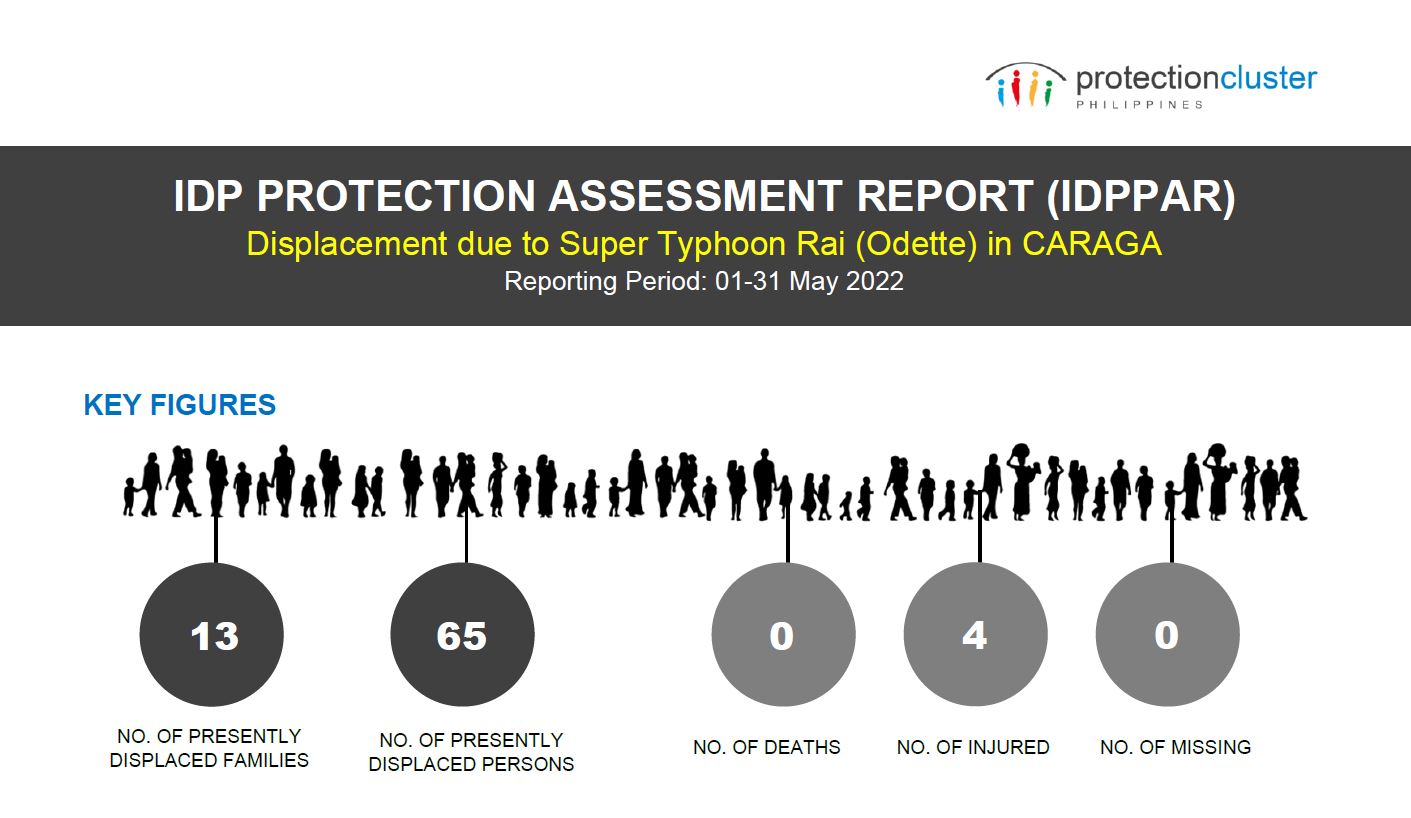IDPPAR No. 02, 2022: Displacement due to Typhoon Rai (Odette), Issue No. 05
INCIDENT BACKGROUND
Super Typhoon Rai (local name Odette) swept through the Philippines and made its first landfall on 16 December 2021 in the coastal city of Siargao, with subsequent landfalls across eight other areas in Mindanao and Visayas region in the Philippines. The typhoon brought with it torrential rainfalls, violent winds, floods and storm surges leaving a wake of destruction on its pathway. As of 24 May 2022, 406,775 families (around 1,538,087 persons) from 1,099 barangays in 67 municipalities and 6 cities across the five provinces of the Caraga region were affected by the typhoon. While many affected populations who were displaced during the typhoon have already returned home, some families have remained in the evacuation center and some others whose houses were totally damaged decided to stay with their relatives.
CURRENT SITUATION
According to the DSWD Caraga Disaster Response Operation Monitoring and Information Center (DROMIC) Terminal Report dated 24 May 2022, there are 406,775 families, (around 1,538,087 individuals) affected in the whole of Caraga. Of this number, 13 families (approximately 65 individuals) remain in one (1) evacuation center in the mainland of Surigao Del Norte. While most of the displaced families have already returned to their places of origin, there are still some who remain displaced and are currently staying with friends and relatives or in informal settlements. Majority of these families are those whose houses were totally damaged and have no means to rebuild them. While response slowly transitions to early recovery, many people are still left in complete devastation without stable shelter, access to essential services and health care, adequate food supply, access to protective services, and sustainable livelihoods. Given the extent of damage left by the typhoon, the affected families anticipate that it may still take some time to reach full recovery.
Meanwhile, the No-Build Zone (NBZ) policy which discourages communities not to return to the sites of their original homes and prevents them to build along the coastal areas, poses a setback to the ongoing rebuilding efforts. This also further exacerbates the typhoon-affected population’s exposure to protection risks.
Moreover, the changes in the political landscape in Caraga, particularly in Surigao Del Norte, Surigao City and Dinagat Island (electing a new Representative, new Governors, and a new Mayor in Surigao City) may cause uncertainties to affected families and IDPs especially on the continuation of recovery and rehabilitation programs of the previous administrations.

